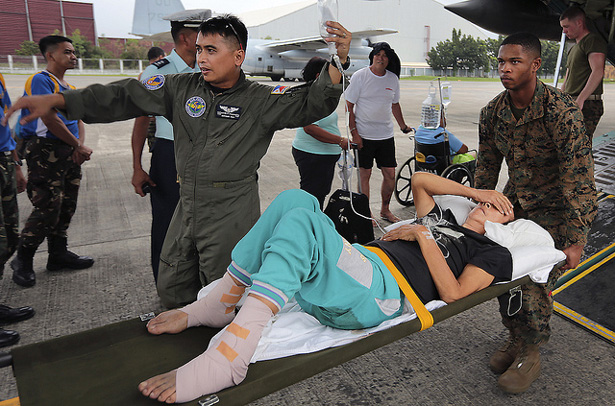-
Andrew Freedman, Climate Central
Typhoon Haiyan Foretells Challenges for U.S. Military in Warming World
November 14, 2013 By Wilson Center Staff
Super Typhoon Haiyan left the central Philippines in ruins, with a staggering death toll that could climb well above 10,000. The U.S. military is leading the international response to the devastation, along with international aid agencies. The Pentagon has dispatched an aircraft carrier and five other Navy ships, plus a separate group of at least 90 marines and specially trained humanitarian relief teams to the area.
Although the humanitarian deployment is nothing new for the Pentagon, it foreshadows what many national security experts — including the Navy’s top Pacific commander — see as an increasingly challenging role for the U.S. as global warming influences the power and destructiveness of storms via warming and rising seas.
Admiral Samuel J. Locklear III, head of U.S. Pacific Command, identified climate change-related impacts as the biggest threat facing U.S. forces in the Pacific, telling the Boston Globe in an interview in March that warming “is probably the most likely thing that is going to happen…that will cripple the security environment.”
In recent years, numerous reports, including Defense Department assessments such as National Intelligence Council products and the Quadrennial Defense Review as well as analyses from various think tanks, have found that climate change is likely to serve as a threat multiplier by increasing the frequency and severity of extreme weather events, and reducing food production at the same time that the global population is soaring.
Continue reading on Climate Central.
Sources: Boston Globe, U.S. Department of Defense.
Photo Credit: U.S. Marines assist the Philippine Air Force with Haiyan relief, courtesy of Lance Cpl. Caleb Hoover/U.S. Marine Corps.
 A Publication of the Stimson Center.
A Publication of the Stimson Center.






